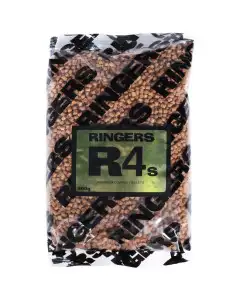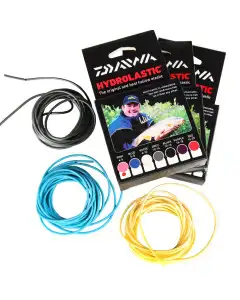This is a demo store. No orders will be fulfilled.
How to Become a Master at Shallow Fishing!
This entry was posted on by Thomas Moretti

In the warmer months, there is one method that wins more matches than any and this is fishing shallow on the pole, but it is a method that is seen as difficult and complicated with a lot of anglers refusing to fish it. However, the rewards are there to be had, and in this weeks AD blog we go through the aspects that will transform your shallow fishing overnight and make sure you make the most of this great match winning method.
Little & Often
Feeding is arguably the most important element to being successfull at shallow fishing, as you need to be able to keep the enough fish in the upper layers to create enough compeition to catch. Not only that you need to be able to draw fish in, keep them their without feeding too much which will drive the fish down to the bottom.
This is where feeding little and often is best and by feeding small amounts regularly, you are able to draw fish in, by creating a column of food but there is not only a small amount of bait at any one time which will create enough competition so that your hookbait is picked up in double quick time!


Don't ignore the Jigger
The Jigger is a new rig on the scene that differs to your standard shallow rig as the float is not fixed and slides between two stops on the line. A proven and effective method that cannot be ignored, this shallow rig has seen anglers several times catch a fish a chuck where another angler fishing a fixed shallow rig cannot get a bite.
What makes this rig so good? As the float runs between two stops, it allows you to fish several depths at one time, because you can slowly lower your hook bait down or jig it up and down, all while your float is fishing. Not only that, as the line is direct and tight to your elastic, you find the fish cannot eject the hookbait as they hook themselves against your pole elastic, with most bites resulting in the pole elastic streaming out of the pole tip.


Shallow Fishing Floats
Mark your Top Kits
Depth is massively important to shallow fishing success and you find the most success anglers will constantly be changing depths, either by using different rigs or moving their float.
This is knowing what depth you are fishing is essential, as it is amazing how changing depth by even a single inch can be the difference between catching a fish a drop to sitting their with no bites at all.
So make sure that your top kits are marked with a set of depth markers. Some poles come with a mark every 6 inches, but it is even better to have a mark every inch, as it allows you to know the exact depth your are fishing/catching at and will be a good starting point for future sessions.


Pellets are Number 1!
If there is one bait that will catch fish shallow on every venue then it would be pellets. Available in a range of sizes to suit the fish you are catching, they make an attractive noise as they are hit the surface that draws fish from far and wide.
You also don't need to feed many to catch well and if you combine these with feeding little and often then you are on to a sure fire winner. Although matching your feed to your hookbait catches several fish, always have some different size and colour hookbaits with you, as a change of a different colour such as red can dratcially transform a session. For f1s and small carp a combination of 4mm and 6mm is great, whereas for big carp a combination of 6mms and 8mm is what you need for success.


Pellets for Shallow Fishing
Watch for Cruisers!
On them warm muggy days when the fish are not feeding early in the match, a great way of catching fish while building other swims for the later in the match, is to keep your eyes peeled for carp swimming just under the surface.
By keeping your pole off the water, to allow fish to congregate in front of you. Try and target fish that are either stationary or swimming slowly as these are most likely to take a slow falling bait such as pellets, meat or maggots.
Rig wise, keep a seperate rig set at 12 inches in depth with all the shot under the float and a long line of 3-4ft between your float that allows you to flick your hookbait just in front of any cruising fish.


Soft elastics are a Must!
Although you are looking at catching large weights of fish with this method, a lot of anglers make the mistake of using too heavy an elastic. By using a softer elastic, once a fish is hooked it, it is able to exit the peg with minimal disturbance allowing the rest of the fish to continue feeding with confidence. As opposed to a heavy elastic where the fish will start splashing on the surface when hooked and cause the rest of the fish in the swim to leave.
You also find hollow elastic and hybrid elastics are best as they have a high stretch factor, last well and also have enough power at the netting stage and combined with a puller kit you will be able to land even large carp with ease. For smallers f1s and ide anything in a size 6-10, larger f1s and small carp a 10-12 and if you are looking at catching big carp a 12-14.


Shallow Fishing Pole Elastics
Maggots & Casters still have their day!
Although pellets will always catch fish shallow, there are days and instances when fishing shallow with live baits such as maggots and casters will be unbeatable.
If you are fishing a venue with Ide or large skimmers, that are great weight builders in match, fishing with maggots or casters will allow you to fill the gaps when those match winning carp and f1s are not in the swim or not feeding.
Casters are also great in the height of summer when big weights are on the cards as you can not only feed a lot of bait to draw fish in without filling the fish up, but they also make an amazingly fish attracting noise as they hit the surface.


Overshot your rig!
One of the most frustrating parts of fishing shallow for species such as f1s is missed bites as the fish pick up and eject the bait incredibly quick. Where allowed, there is a simple way to hit every bite and that is to overshot your rig by one or two no.10 shot.
This keeps the line tight and changes them missed bites to hooked fish with most bites resulting in the elastic streaming out the end of the pole tip. As your float will sink, keep your float as close your elastic connector as possible to maximise the blog rig effect.























